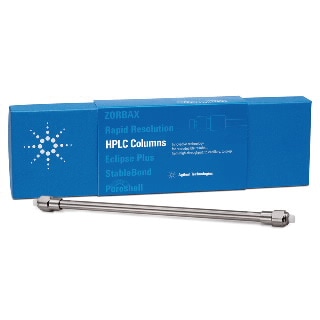
Hi-Plex
- Ion Exclusion/Ligand Exchange Columns
Product Details
- Agilent's recommended column for carbohydrate analysis
- Operates on a standard HPLC and does not require specialized equipment
- Simple operating conditions: water or dilute acid, isocratic conditions, up to 30 % acetonitrile as a modifier
- Available in 8 μm and 10 μm particle sizes
- Complies with USP L17, USP L19, and USP L34
HPLC & LC Column Selector Tool
A series of tools to help you navigate to the best HPLC column choice for your application.
Essential Supplies Guide for InfinityLab LC Series Instruments
Discover the right supplies for your instrument to achieve peak performance and optimize your LC workflow.
- Key Literature
-
Single Quad LC/MS Analysis of Organic Acids Using an Agilent Hi-Plex Column
Organic acids are quantitated down to ppb levels using an Agilent Hi-Plex column and Single Quad detection.
- Application Notes
- English
- 23 Dec 2016
- 644.98 KB
Analysis of Organic Acids by Ion Exclusion Chromatography and Single Quadrupole LC/MS
Demonstration of sensitivity and linearity of LC/MS single quad for analysis of organic acids using standards and real world samples.
- Posters
- English
- 31 Oct 2016
- 1.71 MB
- FAQs
-
LC Column User Guides | Agilent
Find the information you need to ensure optimal performance of your column, such as flow rate, solvent compatibility, cleaning, storage, and usage conditions.
PFAS Analysis in Milk, Infant Formula, and Related Ingredients Using HPLC
Per- and polyfluoroalkyl substances (PFAS) are a large group of anthropogenic chemicals that have been applied in industrial, commercial, and domestic products since the 1950s. Because of their toxicity, persistence, and bioaccumulation potential, PFAS have become global environmental pollutants. Besides the environment, the food chain represents another source of exposure, and the risk related to the presence of PFAS in foods has become of increased interest. Whole milk, infant formula, and ingredients used in infant formula production represent important foodstuffs that require sensitive methods with reporting limits at low parts per billion levels or lower for multiple PFAS. This article summarizes optimization experiments and validation of a complete workflow, including sample preparation and a liquid chromatography–tandem mass spectrometry (LC–MS/MS) method for determination of sixteen priority PFAS analytes listed by the U.S. Food and Drug Administration (FDA).
- 07 Jan 2022

